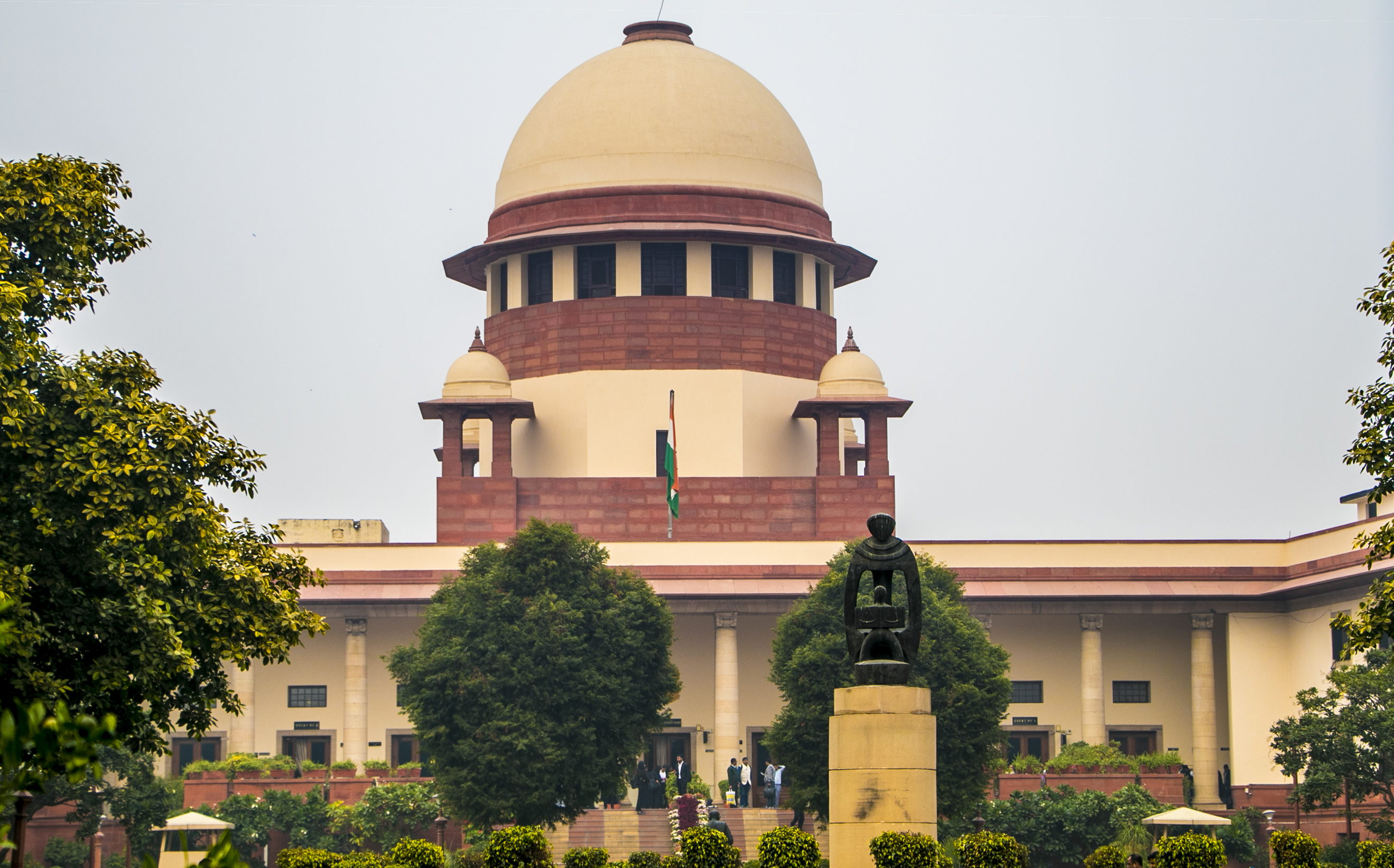Illegal use of sanctioned weapon per se does not constitute offence u/s 27 of Arms Act, without proving misdemeanour u/s 5 or 7: SC

Read Judgment: SURINDER SINGH v. STATE (UNION TERRITORY OF CHANDIGARH)
Tulip Kanth
New Delhi, November 30, 2021: In a case pertaining to the Arms Act, 1959, the Supreme Court has opined that illegal use of a licensed or sanctioned weapon per se does not constitute an offence under section 27, without proving the misdemeanour under section 5 or 7.
The Bench of Justice N.V.Ramana, Justice Surya Kant and Justice A.S.Bopanna added that at best, it could be a misconduct under the service rules, the determination of which was not the subject of the Trial.
The appellant, Surinder Singh, had laid challenge to the judgement of the High Court of Punjab & Haryana, whereby, the order of his conviction and sentence passed by Additional Sessions Judge, Chandigarh was confirmed. The appellant had been convicted under section 307 of the Indian Penal Code, 1860 and section 27 of the Arms Act, 1959.
The factual scenario of the matter was that in the year 1999, the Appellant, who was then a Head Constable in Chandigarh Police, entered the residential office of the complainant, Mansur Ali, in an inebriated condition and threatened the complainant by pointing the pistol at him.At the same time, he directed Maler Singh and R.K. Sood to step outside the office, to which they complied. In the meantime, the Appellant moved around the table, towards the Complainant, pulled the lever and made himself ready to fire.
Sensing the seriousness of the situation, Complainant lunged at the Appellant and pushed his hand towards the ceiling, which resulted in the bullet, fired from the pistol, hitting the ceiling of the office.
The appellant then attempted to fire a second time, however, he was unable to and in the said exercise a bullet fell from his pistol. Panic-stricken, appellant rushed out of the office, leaving behind his wireless set on the table of the Complainant and his scooter outside the house. No injury was caused to the complainant. The incident was then reported to the police.
Upon receiving the information, an F.I.R. was lodged against the Appellant, whereafter, the Appellant was arrested, with the pistol still in his hand.The case was committed to the Additional Sessions Judge, Chandigarh, and charges under Section 307 IPC and Section 27 of the Arms Act were framed.
The Trial Court convicted the Appellant and awarded a sentence of rigorous imprisonment for 3 years.Discontented with his conviction, the Appellant preferred an appeal before the High Court of Punjab & Haryana. The High Court sustained conviction and the consequential sentence imposed by the Trial Court and dismissed the appeal.Hence, the present Appeal.
After considering the arguments and evidence, the Bench observed that the prosecution no doubt had failed to attribute any motive to the Appellant for yearning to kill the Complainant, however,, the absence of motive alone could not abjure the guilt of the Appellant.
The Bench was of the view that neither the presence of the Appellant at the site of the episode, nor the fact that the bullet was fired through his service pistol was disputed by the Appellant.Also, the CFSL Report proved that the cartridge recovered from the office of the Complainant was fired from the service pistol recovered from the possession of the Appellant.
Both the Complainant and R.K. Sood had unequivocally asserted that the bullet was fired by the Appellant and the version of the Complainant, that had he not interfered and caught hold of the hand of the Appellant, the gun, which was aimed onto his face would have unloaded the bullet, resulting in unfortunate consequences carried weight, stated the Bench.
There was also nothing on record to support that the Appellant made any attempt at all to bring his version to the notice of his Superiors, as claimed by him in his statement under Section 313 Cr.P.C. The Top Court found that the Trial Court and the High Court had unerringly convicted the Appellant for the charge under Section 307 of IPC.
The Bench was also of the opinion that the Appellant was admittedly a police official at the time of the incident and the arms and ammunition used for the commission of the offence, were placed in his possession under the sanction accorded by the Competent Authority. The Appellant being in authorised possession of the weapon, could not be said to have used an unlicensed weapon, as prohibited under Section 5 of the Arms Act.
“It appears that the Trial Court was swayed by irrelevant considerations such as illegal use of the weapon, and lost track of the objective of the Statute, which has been enacted to provide a licensing/regulatory regime, to enable law-abiding citizens to carry arms, and also to prohibit the possession, acquisition, manufacture, etc. of certain categories of firearms, unless authorized by the Central Government. In other words, illegal use of a licensed or sanctioned weapon per se does not constitute an offence under Section 27, without proving the misdemeanour under Section 5 or 7 of the Arms Act. At best, it could be a misconduct under the service rules, the determination of which was not the subject of the trial”, said the Bench.
Thus, while partly allowing the Criminal Appeal,the Bench set aside the conviction and sentence awarded to the Appellant under Section 27 of the Arms Act but maintained his conviction under Section 307 of IPC. The sentence under Section 307 of IPC was however reduced to the period already undergone. Since, Appellant was on bail, his bail bonds were discharged.
Sign up for our weekly newsletter to stay up to date on our product, events featured blog, special offer and all of the exciting things that take place here at Legitquest.




Add a Comment